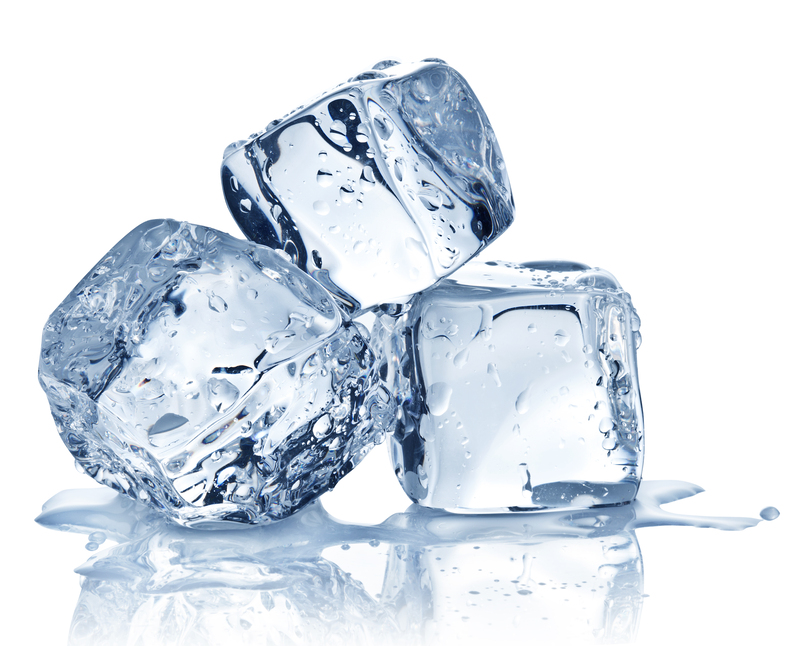Steps to Neutralize Unwanted Damp Odor
Posted on 19/08/2025
Steps to Neutralize Unwanted Damp Odor: A Comprehensive Guide
Unwanted damp odor can be a persistent and frustrating problem, affecting the comfort and overall atmosphere of your home. Whether the musty smell comes from a basement, bathroom, kitchen, or any other area, understanding how to neutralize damp odors is essential for maintaining a fresh and healthy living space. In this in-depth article, we outline effective steps to eliminate musty smells and prevent their return, helping you create a cleaner, more pleasant environment.

Understanding Damp Odor: What Causes Musty Smells?
Before jumping into action, it's vital to grasp what causes unwanted dampness odor. Typically, this displeasing scent arises when excess moisture meets organic materials (like wood, fabric, or paper), creating an environment where mold and mildew thrive. Common sources of damp smells include:
- Leaky pipes or water intrusion
- Poor ventilation in basements, crawl spaces, and bathrooms
- Wet laundry left unattended
- Condensation on walls or windows
- Flooding or previous water damage
When moisture gets trapped, it leads to mustiness, often described as an earthy, stale, or "old house" scent. Prolonged exposure to such odors can also indicate underlying issues, such as mold or bacterial growth, which can negatively impact your health.
Step-By-Step Process to Neutralize Damp Odors Effectively
Step 1: Identify the Source of the Dampness
The first and most crucial step in removing damp smells is identifying where the moisture is coming from. Inspect all areas prone to dampness, such as basements, under sinks, behind appliances, and around windows and doors. Look for:
- Visible mold or mildew
- Discoloration, water stains, or damp spots
- Peeling paint or wallpaper
- Condensation on surfaces
Tip: Use a moisture meter to detect hidden dampness in walls and floors.
Step 2: Fix Moisture Problems
You cannot successfully neutralize unwanted damp odor without addressing the source of moisture. Take these actions:
- Repair leaks: Fix leaky roofs, windows, or pipes immediately.
- Seal gaps and cracks: Fill in foundation cracks and gaps that let in water.
- Improve drainage: Ensure your home's grading directs water away from the foundation.
- Ventilate: Use exhaust fans in bathrooms and kitchens, and ensure ventilation in attics and crawlspaces.
- Use vapor barriers: Add barriers in crawlspaces and basements to prevent ground moisture from seeping in.
If you have had flooding or water intrusion, consult a professional for thorough remediation.
Step 3: Dry Out the Area Completely
Once you have stopped moisture at the source, it's time to dry the affected areas thoroughly. Here's how:
- Open windows and doors to promote airflow, weather permitting.
- Use fans to increase air movement in enclosed or poorly ventilated spaces.
- Deploy dehumidifiers to remove excess humidity from the air--aim for a humidity level below 50%.
- Remove wet items (carpets, furnishings, cardboard boxes) and dry them outdoors if possible.
Tip: Drying may take several days, especially if walls or floors are soaked. Patience is key for lasting odor removal.
Step 4: Clean and Disinfect Surfaces
To neutralize the musty odor lingering after water damage, you must deep clean all affected surfaces:
- Wash hard surfaces: Use a mixture of water and a gentle detergent. For extra mold-fighting power, add a cup of white vinegar per gallon of water.
- Clean soft materials: Launder curtains, cushion covers, and removable fabrics in hot water with baking soda or vinegar.
- Disinfect: For non-porous materials, use a diluted bleach solution (1 cup bleach per gallon of water) or approved mold-killing cleaners.
Be sure to wear gloves and ventilate the area well while cleaning. Never mix bleach with ammonia or other cleaners.
Step 5: Remove or Replace Heavily Affected Materials
In cases of severe or prolonged dampness, some materials may be beyond cleaning. Items such as carpets, insulation, particle board, and mattresses can soak up moisture and grow mold inside where it's impossible to reach.
- Discard materials: If an item has visible mold, a persistent smell, or cannot be cleaned, it's safest to replace it.
- Replace drywall or ceiling tiles: If water damage is extensive, remove and replace compromised sections.
Getting rid of such items is crucial for permanent musty odor removal.
Step 6: Neutralize Odors With Natural Absorbers
Once the area is clean and dry, further neutralize lingering damp odors with natural deodorizing agents:
- Baking soda: Sprinkle liberally over carpets and let sit overnight before vacuuming. Place bowls of baking soda in musty cupboards and corners.
- Activated charcoal: Place mesh bags or bowls of charcoal in problem areas to absorb odors.
- White vinegar: Set out open bowls of vinegar to neutralize smells (vinegar scent dissipates in a few hours).
- Coffee grounds: Use used coffee grounds in open containers to absorb mustiness.
Repeat as needed until the room smells completely fresh.
Step 7: Freshen the Air
After neutralizing unwanted damp odors, finish the process by infusing the space with a clean, pleasant scent:
- Natural essential oils: Use a diffuser with oils such as tea tree, eucalyptus, or lavender, which also offer antibacterial properties.
- Simmering spices: Boil cloves, cinnamon, or citrus peels to introduce a warm, spicy aroma.
- Commercial air purifiers: For persistent issues, an air purifier with a HEPA filter helps remove airborne mold spores and odors.
Avoid merely masking odors with sprays or plug-ins, as they don't address the underlying problem.
Step 8: Maintain a Dry, Odor-Free Environment
Prevention is just as important as eliminating musty odors. To keep your space fresh in the long term:
- Use dehumidifiers year-round in humid climates or basements.
- Leave windows ajar when weather permits to promote cross-ventilation.
- Promptly dry wet laundry, towels, and shower mats.
- Store items off the floor in basements, using shelves or pallets.
- Monitor for leaks and fix them as soon as they occur.
- Regularly clean and air out closets, cabinets, and under sinks.
By following these maintenance routines, you can prevent unwanted damp odors from returning.
Additional Tips for Persistent Damp Odors
- Check your HVAC system: Dampness can accumulate in ductwork and on air conditioner coils. Ensure filters and ducts are cleaned regularly.
- Use moisture-absorbing products: Products like silica gel packs or calcium chloride crystals help maintain dryness.
- Apply mold-resistant paint: After cleaning, repaint walls with mold-inhibiting paint to protect against future growth.
- Test for mold: If musty odors persist despite cleaning, consider professional mold testing and remediation.
Common Mistakes to Avoid When Removing Musty Smells
- Ignoring the source: Covering up odors without addressing the underlying dampness will make the problem worse over time.
- Skipping drying: Without thorough drying, cleaning efforts may be wasted and mold can quickly return.
- Using harsh chemicals on porous materials: Some sprays or bleaches can damage fabrics, wood, and carpets or leave lingering chemical smells.
- Delaying action: The longer moisture sits, the more difficult it is to eradicate both the odor and its cause.

Frequently Asked Questions on Neutralizing Damp Odor
What is the fastest way to get rid of damp smells?
The fastest way to neutralize unwanted damp odor is to thoroughly dry the area (using dehumidifiers and ventilation), clean all affected surfaces, and use odor-absorbing materials such as baking soda or activated charcoal. However, addressing the cause of moisture is essential for a lasting solution.
Are damp odors dangerous to health?
Prolonged exposure to mold and dampness can lead to allergic reactions, respiratory issues, and aggravate asthma, particularly in sensitive individuals. Always resolve the cause and clean up thoroughly to protect your health.
Can air fresheners remove musty odors?
Air fresheners can only mask unwanted smells temporarily. Permanent removal of damp odors requires eliminating the source of moisture, cleaning thoroughly, and using natural odor absorbers.
Is it safe to use bleach on all surfaces?
While bleach is effective on non-porous surfaces, it should be avoided on fabrics, carpets, and porous materials where it can discolor and degrade fibers. In such cases, use vinegar or baking soda for safe odor removal.
Conclusion: Say Goodbye to Unwanted Damp Odors
Unwanted damp odors are a clear sign of excess moisture and potential mold growth in your living space. Taking decisive, thorough action is the best way to neutralize these musty smells and safeguard your home and wellbeing. Remember, the process involves not just cleaning and deodorizing but fixing the hidden causes of dampness, drying completely, and staying vigilant with maintenance. With the right steps, your home can remain fresh, comfortable, and odor-free year-round.
Looking to learn more home care and odor-neutralizing tips? Bookmark this page and check back often for the latest guides on keeping your environment healthy and inviting!




